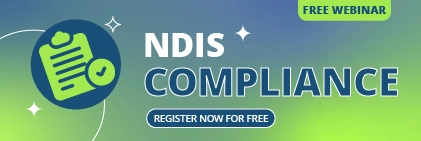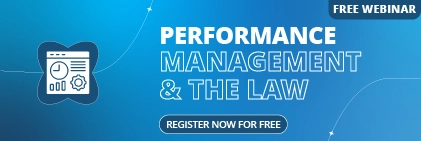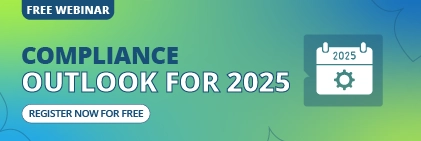Are you struggling to manage the growing complexity of workplace risks? You’re not alone. In today’s rapidly evolving workplace landscape, HR risks have multiplied exponentially for Australian businesses.
Remote work arrangements have introduced new safety challenges that weren’t on our radar just a few years ago. Compliance requirements change seemingly overnight, requiring constant vigilance from HR professionals.
“How can we effectively manage HR risks in our modern workplace?” This comprehensive guide addresses the ten critical factors every HR professional and business leader needs to consider in 2025.
With proper risk management strategies, your organisation can prevent costly legal disputes that could devastate your bottom line. You’ll safeguard your company culture from toxic behaviours and practices. Let’s explore the key factors you need to address right now.
What Exactly Is HR Risk Management?
HR risk management encompasses systematically identifying, assessing and mitigating potential threats related to your workforce and workplace practices.
It aims to minimise threats that could negatively affect employee well-being, organisational compliance, productivity, or reputation.
HR risk management is essential for legal compliance, employee satisfaction, and business continuity.
What Are the Essential HR Risk Factors for Australian Businesses to Address?
What Are My Workplace Health and Safety Compliance Obligations?
Under Australia’s harmonised WHS laws, employers have a primary duty of care to ensure worker health and safety. This responsibility extends beyond physical safety to psychological wellbeing.
Physical hazards like ergonomic injuries and equipment accidents require regular audits and clear procedures.
Psychological hazards such as work stress, burnout, and bullying necessitate mental health training and anti-bullying policies.
Remote work introduces additional risks including home office hazards and isolation.
WHS non-compliance carries serious consequences, with penalties reaching millions for corporations in the most serious cases.
How Can I Ensure Compliance With the Fair Work Act?
The Fair Work Act 2009 governs employment relationships in Australia. When seeking guidance about workplace compliance in Australia, businesses should focus on several high-risk areas:
- Award misclassification occurs when employees are incorrectly categorised
- Wage calculation errors involving overtime, allowances, and penalties
- Mismanagement of leave entitlements and casual employment arrangements
Recent penalties for wage underpayment have reached millions of dollars for large employers.
Protecting your organisation requires systematic review of employment contracts, regular payroll audits, and staying current with Fair Work updates.
What Steps Can I Take to Prevent Workplace Harassment and Bullying?
Inappropriate behaviour creates multilayered risks for organisations. Beyond legal exposure, harassment and bullying lead to decreased productivity, higher turnover, and lasting cultural damage.
Effective behavioural risk management combines several key elements:
- Clear codes of conduct defining acceptable behaviour
- Accessible reporting mechanisms for incidents
- Transparent investigation procedures
- Regular compliance training on respectful workplace interactions
- Consistent accountability at all organisational levels
With harassment claims potentially costing hundreds of thousands of dollars in settlements, prevention represents both an ethical imperative and financial necessity.
How Do I Manage Risks in a Hybrid or Remote Workplace?
Remote work arrangements bring unique risk management challenges. Employers retain WHS responsibilities for home-based workers but have reduced visibility and control. Performance management becomes more complex when teams operate across different arrangements.
Many organisations find success through comprehensive remote work policies coupled with structured home office assessments. Specialised training for managers leading hybrid teams is also essential.
Digital collaboration tools and regular virtual check-ins help maintain connection despite physical distance.
What Are My Obligations Regarding Employee Data Protection?
The Privacy Act 1988 and Australian Privacy Principles establish clear requirements: collect only necessary personal information, secure it properly, use it only for intended purposes, and allow employee access and correction rights.
Data privacy risks arise in several areas:
| Risk Area | Potential Consequences |
|---|---|
| Insecure HR Systems | Data breaches, regulatory penalties |
| Excessive Data Collection | Privacy violations, trust erosion |
| Unclear Privacy Notices | Non-compliance with APPs, complaints |
| Third-party Data Sharing | Unauthorised disclosures, breaches |
With potential penalties reaching millions for serious privacy breaches, comprehensive data governance has become non-negotiable.
How Can I Build a More Inclusive Workplace While Managing Associated Risks?
Diversity initiatives carry both opportunities and risks. Beyond possible discrimination claims, businesses face risks from unconscious bias in hiring, inadequate reasonable adjustments, and pay equity discrepancies.
Building an inclusive workplace requires regular diversity audits, inclusive recruitment practices, and accessible complaint mechanisms to ensure early identification of potential issues.
Many organisations discover that inclusion efforts deliver benefits beyond risk mitigation, including enhanced innovation, improved talent attraction, and better decision-making outcomes.
What Can I Do to Reduce Unfair Dismissal and Termination Risks?
Termination remains one of the highest-risk areas in HR, with unfair dismissal claims often resulting in significant costs for organisations – even when the claims are successfully defended.
Effective termination risk management begins long before any decision to end employment:
- Clear performance expectations and KPIs establish objective standards
- Consistent documentation of all performance discussions creates essential evidence
- Progressive discipline processes demonstrate procedural fairness
Manager training represents perhaps the most valuable investment in reducing termination risks, substantially reducing unfair dismissal exposure.
How Do I Manage Risks Associated With Contractors and Gig Workers?
Mischaracterising employees as independent contractors creates potential liability for:
- Back pay claims for entitlements
- Superannuation guarantee charges
- Tax implications and penalties
- Workers’ compensation issues
Recent contractor misclassification cases have resulted in multi-million dollar settlements.
Protecting your organisation requires thorough analysis of working relationships, clear contractor agreements, and regular review of arrangements.
What Risks Should I Consider During Organisational Restructuring?
When planning restructuring, businesses should consider consultation obligations under awards and agreements. They should also develop transparent redundancy selection criteria, explore redeployment opportunities, and create comprehensive communication strategies. Additionally, it’s important to assess potential impacts on the remaining workforce.
Poorly managed change processes frequently trigger decreased engagement among remaining staff, increased turnover, and potential legal claims.
A structured change risk assessment before implementation can identify potential issues early.
What Are My Responsibilities Regarding Employee Mental Health?
With updated WHS regulations, organisations must identify workplace psychosocial hazards.
They must implement reasonable measures to address them, consult with workers about psychological risks, and respond appropriately to mental health incidents.
Common psychosocial risk factors include high job demands, low job control, poor workplace relationships, and inadequate recognition systems.
Although mental health claims make up a relatively small portion of workers’ compensation cases, they account for a much larger share of the total costs because of longer recovery periods.
Compliance software can help track and manage prevention initiatives that deliver measurable returns through reduced claims and improved productivity.
How Do I Implement Effective HR Risk Management in My Organisation?
Successful implementation typically follows a five-step process:
- Risk identification through regular assessments
- Risk analysis evaluating likelihood and potential impact
- Control implementation via policies and training
- Monitoring of key risk indicators
- Review of control effectiveness
Technology plays an increasingly important role in modern risk management. Digital HR and workplace compliance platforms automate policy distribution, track training completion, flag compliance deadlines, provide analytics on emerging risk areas, and streamline incident reporting.
What’s the Business Case for Investing in HR Risk Management?
The return on investment for HR risk management is substantial and measurable:
- Reduced legal costs through fewer claims and investigations
- Lower insurance premiums due to demonstrated risk controls
- Improved productivity with less disruption from incidents
- Enhanced reputation and protection of brand value
- Better attraction and retention as employees experience a safer workplace
For most organisations, prevention costs significantly less than responding to HR incidents after they occur.
Conclusion
Has this guide opened your eyes to HR risks you hadn’t considered? You’re taking the first important step toward better protection for your organisation and your people.
Effective HR risk management extends far beyond policies and procedures. It requires creating a genuinely risk-aware organisational culture throughout every level of your business.
Your organisation becomes stronger as it learns from near-misses and minor incidents before they escalate. Risk considerations become naturally integrated into business decisions rather than afterthoughts.
By addressing the key risk factors we’ve explored, your organisation can significantly reduce HR-related risks while creating a safer, more compliant workplace. Your employees will thank you – and so will your bottom line.
Ready to transform your approach to HR risk management? Learn how Sentrient helps Australian businesses create safer, more compliant workplaces with our comprehensive compliance platform. Request a demo today.
Your organisation deserves protection from increasingly complex HR risks. Let us show you how simple effective risk management can be with the right partner.
FAQs
1. What is the first step in implementing HR risk management?
The first step is conducting a thorough risk assessment to identify potential threats across all HR functions, reviewing current policies and practices against legal requirements.
2. How often should we review our HR risk management strategies?
HR risk management should be reviewed at least annually, as well as whenever significant changes occur such as new legislation, organisational restructuring, or after any serious incidents.
3. What documentation is essential for effective HR risk management?
Essential documentation includes policies covering key risk areas, training records, incident reports, risk assessments, and records of actions taken to address identified risks.
4. How can small businesses with limited resources manage HR risks effectively?
Small businesses can focus on high-priority risks first, leverage workplace compliance software designed for SMEs, access government resources, and join industry associations for guidance.
5. What role should managers play in HR risk management?
Managers are frontline risk managers who should be trained to identify potential issues, apply policies consistently, document performance concerns, and respond appropriately to complaints.
Read More About HR Management System:
- The Best HR Software Available In 2025 For Australian Businesses
- The Top 5 HR Practices That Impact HRMS Success
- Benefits Of Having HR Management Software In Your Organisation
- How to Handle Employee Policy Issues: FAQ for HR Managers
- Key Factors to Address in HR Risk Management for Modern Workplaces





